Say what? Exploring “The most interesting place in the city” – the comments section of online news articles

Image by flickr user Marc Wathieu (CC BY-NC 2.0)
In Brief
Online commenting culture can be intriguing. Do people comment on news articles about libraries? What do they say? These are the questions that led us to study public comments in response to news articles about libraries in major U.S. newspapers. Newspaper articles were selected for analysis based on their relevance to libraries and the number of comments the articles received.
We wondered: Does the public see us as a “growing organism” or a stagnant, out-of-date dinosaur? A content analysis of these comments provides a snapshot of public opinion and perception. Listening in on online conversations about libraries can provide insight into how the public views libraries and library services. People are taking the time to engage in online conversation about libraries, and librarians can learn from these discussions, either through passive or active participation.
By Margot Hanson and Annis Lee Adams
Introduction
Despite popular warnings of “don’t read the comments!” and “don’t feed the trolls!” we are fascinated by the culture of online commenting and find ourselves drawn to the comments sections of various online venues: news articles, YouTube videos, blog posts, and other user generated content. We decided to pursue this interest as a multi-stage research project related to libraries. We initially focused on academic libraries via U.S. higher education periodicals (Hanson & Adams, 2014, April), then shifted to broader library topics found in U.S. newspapers (Hanson & Adams, 2014, November). Despite trolling and other bad behavior, we were optimistic we would find useful conversations in the comments section that could provide insights for libraries. The Pew Internet & American Life Project report on How Americans Value Public Libraries in Their Communities also inspired us to investigate public opinion about libraries as seen in online comments.
We started by identifying what types of unsolicited comments were being made about libraries without the motivation of surveys and incentives, as well as which topics generated the most interest among readers. The comments revealed what commenters like and dislike about libraries. We offer a sneak peek of what to expect from possible proponents and detractors through representative sample comments. Hopefully, our research can help readers prepare plans for advocacy and marketing on behalf of their libraries.
Literature Review
One of the studies that motivated our current project was the Pew Internet & American Life Project report on How Americans Value Public Libraries in Their Communities. According to this 2013 report,
Americans strongly value the role of public libraries in their communities, both for providing access to materials and resources and for promoting literacy and improving the overall quality of life. Most Americans say they have only had positive experiences at public libraries, and value a range of library resources and services. (Zickuhr, Rainie, Purcell, & Duggan, p. 1)
We were curious whether unprompted comments made by self-selecting commenters would share similar sentiments to those found in the Pew research study. The Pew Research Center followed up with a report on Libraries at the Crossroads in 2015 (Horrigan), and we use the findings from that report as a point of comparison.
Studying user comments on news articles is a compelling sphere of research. Comments can potentially reach the same readers as the articles they are associated with, and because of the flipped role from reader to content contributor, the ability to comment provides a forum for dialogue. Commenting functionality is an equalizer—anyone can comment, and one doesn’t need special resources, wealth, or power to post comments. It enables readers to submit their own viewpoints, then discuss and deliberate with other commenters using the original article as the springboard or framework (Springer, Engelmann, & Pfaffinger, 2015).
Multiple studies have found that online comments affect readers’ understanding of article content (Anderson et al., 2013; Felder, 2014; Lee, 2012). Felder details the effect comments can play in shaping perceptions of news sites’ quality, concluding that sites must moderate or limit public comments for the benefit of site traffic and discourse (2014). Exhortations against reading the comments section are grounded in sound advice. Suler (2004) explains that people express themselves online in ways that they never would in real life interactions. The extreme form of this behavior, referred to as trolling, is characterized by gleeful destruction or disruption. One study has found a correlation between trolling and the Dark Tetrad of personality: narcissism, sadism, psychopathy, and Machiavellianism (Buckels, Trapnell, & Paulhus, 2014).
In addition to their potential for disruption, online comments have been found by some researchers to be frequently irrelevant to the topic at hand (Edgerly, Vraga, Dalrymple, Macafee, & Fung, 2013; Reagle, 2015). Eliminating anonymity and moderating comments can improve both the quality and relevance of comment discourse (Reagle, 2015).
Methods
Using circulation figures from the Alliance of Audited Media, we identified U.S. newspapers that had a large digital circulation (as of March 2013). Of those top newspapers, we narrowed the list of publications for this project based on whether the online version was searchable, allowed for date range limiting, and had publicly accessible comments made by readers. These criteria trimmed our list to the top three digitally circulated newspapers, and we added a fourth to provide local relevance to our regional library community. The newspapers included in this study are: The New York Times, The Wall Street Journal, USA Today, and SFGate (the website of the San Francisco Chronicle).
In each publication selected, we searched for the terms [library OR libraries] and limited the date range to July 2013 through July 2014. Our search limits yielded a total of 129 articles, 54 of which had comments (see Appendix A: https://goo.gl/gUaHQ2). 75 of the articles from our initial search results generated zero comments. 55 of these did not allow comments, and 20 did allow comments but had none. For our analysis, we included opinion pieces and blog articles on newspapers’ sites as well as standard news articles because they contribute to the dialog about libraries. We use “article” as an umbrella term.
Our sample consisted of 693 comments from a subset of 51 articles (see Appendix B: https://goo.gl/NMOIxZ). Three articles generated over 200 comments (see Figure 1), which we excluded from our analysis. Because the articles represented in our sample elicited an average of 29 comments, we were concerned that including articles with a disproportionately high number of comments would skew the overall topic coverage. For example, the fourth-highest-commented-upon article garnered 158 comments. This article about Obama’s presidential library elicited many comments that focused on the preservation of history and floated that topic above others.
We manually copied article metadata into a spreadsheet and recorded the type of library discussed in each article. Next, we copied individual comments with their associated metadata. Using a content analysis framework, defined by (Babbie, 2007) as “the study of recorded human communications” (p. 320), we analyzed 693 comments. To develop a categorization system, we read the first 100 comments together to identify topic areas and establish consistency in our application of the topics. Then, we divided the remaining comments to apply topics individually, conferring with each other periodically.
We developed three questions with which to analyze the comments:
- What do people want from a library?
- What do people value about libraries?
- What library services can people do without?
The first question examined what commenters wrote about services or materials they want libraries to provide now or in the future. We coded these as “desire.” Regarding the second question, we coded comments with “value” when the commenter was aware that the library is already doing something, and they expressed appreciation. In response to the third question, when comments conveyed dissatisfaction with libraries in some way, we coded these as “doesn’t value.”
Online comments mirror the ephemeral nature of the Internet; comments are added at different times, and although most comments are made during an initial spark of interest after the publication date of an article, more may be added at a later date. Depending on the commenting policy of the publication, comments may be removed by the editors. Comments may also be removed by the commenters themselves, and unlike the articles, there will be no record of “corrections” or “errata” for comments. If a publication transitions to a new commenting platform (from Disqus to Facebook, for example), past comments could be lost. Because of these factors, our research project focuses on a snapshot in time. We examined comments made on articles during a specific time period, and those comments may or may not continue to exist in their original location in the future.
Due to the self-selecting nature of commenting culture, this project is not intended to encapsulate public opinion as a whole. We cannot claim that the comments we analyzed are representative of the general public, nor can we say that they are comprehensive. Instead, we present results based on an existing public set of metadata produced by a group of motivated readers.
Results & Discussion
Among the 54 news articles with comments, the predominant focus was on topics related to public libraries (40 articles, or 74%). A few articles also discussed other library types, such as special libraries (5 articles, or 9%), international libraries (4 articles, or 7%), academic libraries (3 articles, or 6%), and school libraries (3 articles, or 6%). Some articles mentioned more than one type of library. Public libraries are the most publicly visible of library types, as they are open to all members of a community (compared to special, academic, or school libraries, which allow entrance to specific patrons). It seems natural to us that news article coverage of libraries would focus on public libraries. Due to the nature of most libraries being tied to a physical location, articles tended to highlight regional issues pertaining to their local public libraries.
Of the 54 articles that had comments, four of them garnered more than 100 comments each, indicating topics that generated high interest among readers between July 2013 and July 2014 (Figure 1).
The article that received the most comments, at a total of 368, was from SFGate in March 2014 explaining the San Francisco Public Library’s new Patron Code of Conduct (Knight, 2014). The second highest-commented article generated 283 comments in The New York Times, and detailed the decision by the New York Public Library in May 2014 to scrap its controversial plan to renovate one of their locations (Pogrebin, 2014). An article from October 2013 on SFGate received 230 comments in response to coverage of the arrest at the Glen Park library branch of the “mastermind” behind the online shopping site Silk Road (Lee, 2013). The fourth highest-commented article was published in The New York Times in February 2014 about plans for the Obama presidential library, which generated 158 comments (Rybczynski, 2014). For a list of all articles with the associated number of comments, see Appendix A: https://goo.gl/gUaHQ2. At the other end of the spectrum, 20 of the articles in our initial search results allowed comments but had none.
Although trolling is rampant in many online forums, we didn’t encounter much incivility in the comments we analyzed. We attribute this to the mediated comment platforms used by online news publications, which maintain community discussion policies. Many publications make use of third-party commenting platforms (such as Disqus, Viafoura, or Livefyre), which require users to log in with an account. Some publications employ Facebook or Google+ as commenting platforms, which not only require a login but also attach commenters’ actual identities to their shared opinions.
Many of the comments we analyzed did not directly address the coverage of the article. This is a common finding among studies which examine online comments (Edgerly, Vraga, Dalrymple, Macafee, & Fung, 2013; Reagle, 2015). Of the comments that were relevant to the article topic about libraries, most expressed positive sentiment toward libraries (see Figure 2). It is likely that some of the positive comments were written by library staff. In a few instances, commenters self-identified as librarians, library staff, library board members, retired librarians or friends and family of librarians. However, it was impossible to accurately identify the affiliation of all commenters.
Most Prevalent Comment Topics
We identified 22 topic categories discussed in the comments (see Appendix C: https://goo.gl/fsIBxJ), and the following five topics were most prevalent in the comments. Free access to information was the most discussed topic followed, in descending order, by physical collections, preservation of history, impact on community, and library as place (Figure 2).
In the following sections, we share comments that represent the most common sentiments or arguments made in each topic category. These can provide information to librarians who are making a case for a particular area of their libraries. These comments demonstrate the thoughts of the public from both sides of each topic. For the purposes of the following sections we grouped comments coded as “desire” and comments coded as “value” into a general positive category compared to negative comments that express dissatisfaction with libraries, or “doesn’t value”. We did this because “desire” or “value” comments indicated that commenters still believe in the importance of libraries. It is important to note that the number of positive comments far outweighed the number of negative comments. In the sections below, we provide at least one positive comment and one negative comment, so that our readers can get a sense of what the commenters expressed both positively and negatively, but this one-to-one ratio does not imply that the negative comments were of equal weight to the positive. In the following comment samples, we have maintained the original spelling and grammar.
Free Access To Information
As one commenter notes, “Since Carnegie, libraries are in cahoots to inform the public for free.” ((Comment by user “Jack N Fran Farrell” to Williams, A. (2014, June 27). Got Wi-Fi? Some libraries now lending hotspots. USA Today.)) Libraries are commonly recognized as bastions of intellectual freedom and continuing education, and many comments reflected this core library mission. We categorized these comments under “free access to information.” In this category we labeled comments which addressed issues of public access to a wide variety of balanced information and protection from censorship.
We identified the following comment as representative of common sentiment related to the value of free access to information provided by libraries. The commenter defends the need for libraries as providers of quality information. This comment was made to an article in the Wall Street Journal entitled “Do People Need Libraries in the Digital Age?” (Farley, 2014).
the answer is yes we do need libraries in the digital age because libraries is like to the heart and soul of accsssing information. Information obtained from libraries is sometime more safer, legit and solid as compared to information on the internet (comment by user kendallsingh)
On the other hand, seven commenters don’t value intellectual freedom and would prefer to have only content in libraries that they feel is safe for their children, such as this comment from the Wall Street Journal in response to the article “Furor Erupts as Singapore Library Pulls Children’s Books Over ‘Family Values’” (Wong, 2014). Since this article was specifically about public libraries withdrawing two titles featuring same-sex couples, the comments expressing concern hone in on that topic, but librarians can expect similar push-back related to collections which reflected opinions that patrons may find challenging to their own belief systems.
I bring my children to the libraries, and NLB has to ensure that the books my children are exposed to do not go against my religious beliefs and family values. I am seeing rather aggressive defending of the LGBT rights, so aggressive as to attack religion and the very definition of marriage and family. This kind of fighting makes me even more worried and want to protect my children. (comment by user Christine)
A couple of other detractors don’t value the library as a source of free access to information, because they feel the Internet provides enough information. Overall, commenters recognize providing free access to quality information as a primary function of libraries that continues today despite the proliferation of online access to information.
Physical Collections
“I want to ‘feel’ a book” ((Comment by user “john fitzgerald” to Farley, C. J. (2014, February 12). Do People Need Libraries in the Digital Age? Wall Street Journal.)) is a familiar refrain that librarians frequently hear. The comments section of online newspaper articles is no different, and we found similar expressions in our sample. We categorized comments with the topic of “physical collections” whenever reference was made to tangible items in the library such as print books or other physical materials.
This comment indicates value for physical collections in response to an article on SFGate about a new Berkeley Public Library branch that was built for energy efficiency (Baker, 2013). It illustrates the sentiment of support for why new library branches are still important.
As to all the talk of why we need libraries: the analog experience of looking at a collection of books still trumps the incidental nature of searching via the internet, in my opinion. Not every book is available on-line, nor do people always have the money for purchasing books/magazines on line. (comment by user rktrix)
On the flip side, a comment in response to the Wall Street Journal article, “Do People Need Libraries in the Digital Age,” offers the opposite sentiment regarding the need for public libraries (Farley, 2014). This comment echoes the three negative comments in this category that basically state libraries have been superseded by technology.
The days of the public library are numbered. ebooks are easy, and efficient means of securing quality reading material. Small local public libraries are expense to run, have limited titles, and are turning into public internet cafes. To those you like that kind of thing I say fine. Join a club. My property taxes should not be financing your coffee clutch, reading time, porn surfing. (comment by user HBealeJr)
This comment reflects the misinformed opinions of a vocal few. Obviously, e-books (and their associated platforms and devices) aren’t free, but this commenter is ignorant of the necessary infrastructure required to support library services.
However, we should not be disheartened because the majority of comments expressed the high value most people place on checking out books, conducting genealogical research in library archives, and using library materials.
Preservation of History
We applied the “preservation of history” topic when commenters discussed archives or other means of preserving knowledge for future generations. While there were comments that reflected the topic of preservation of history from multiple articles, the two illustrative comments that we share below are in reaction to the same New York Times article. It was an opinion piece about President Obama’s future presidential library, and it generated 25 of the 38 comments on this topic. The opinion of the article’s author was that President Obama’s presidential library should be small rather than grandiose (Rybczynski, 2014). Many comments reveal the political perspective of the commenters, but the two sample comments below, one positive and one negative, demonstrate the commenters’ views on the library as a preserver of history.
On the positive side, the comment below agrees with 35 of the commenters in expressing the importance of libraries to maintain historical records for future research.
As time travels on, these libraries are great educators for people that come after. (comment by Midwesterner)
The following commenter clearly rejects the idea of comprehensive preservation of historical materials. Only three of the comments categorized with this topic share this commenter’s opinion.
Go small, Mr. President, indeed. Glad to learn that these monstrous libraries of his predecessors are maintained with private funds. Nixon’s tape were and still are a lot of fun but, after his resignation based on one of them, the rest are quite redundant, though. (comment by user Ladislav Nemecl)
The majority of commenters understand the crucial role libraries play in maintaining and providing access to historical and archival information, such as presidential artifacts stored in national repositories. We must note, however, that this comment topic appears here predominantly because of the snapshot of time in which our research occurred. This article touched an emotional and political nerve that resulted in a remarkably high number of comments.
Impact on Community
Whenever comments addressed how the library affects people and/or the socio-economic health within a specific geographic proximity to a library, we tagged them as “impact on community.”
Several comments convey supportive responses to the efforts libraries make in local communities to provide a “third space” for community members. For example, the following comment represents these positive sentiments in response to an article on SFGate about a new branch library with sustainable construction (Baker, 2013).
Plus, libraries are great community spaces, providing a quiet space for reading, learning, research, and stories for the little ones. (comment by user rktrix)
Although there were few commenters who explicitly express they don’t value the positive impact libraries have on local communities, these commenters feel library funding should either be focused exclusively on books or done away with altogether. The following comment was made in response to the Wall Street Journal article, “Do People Need Libraries in the Digital Age” (Farley, 2014).
Library staff sometimes acts too much like bureaucrats, looking to expand/redefine their services without buy-in from the community. If you want a place that is about social services (Teen Center, Senior Center, Community Center, etc.) that is fine – but that is not a library and that is not what the public perceives it is funding as a library. Before taking on those new roles and shifting funding from books, it is city staff responsibility to get explicit buy-in from the people, not just let things slide through as under-the-radar budget line items that keep growing and growing… (comment by user Library Realist)
The results of the Pew report Libraries at the Crossroads echo our findings in this category. According to their recent survey, a “two-thirds (65%) of all of those 16 and older say that closing their local public library would have a major impact on their community” (Horrigan, 2015, p. 10). From our analysis, when commenters discuss issues related to community benefits from local libraries, they evince a strong appreciation for the “extra” programming and services that libraries provide beyond circulating book collections. These benefits are sometimes explicitly detailed by the commenters and are sometimes expressed as a positive sentiment toward the intangible ideals that libraries represent. The negative responses typically indicate a lack of familiarity with modern public libraries on the part of the commenter, and reveal that the commenter had most likely not stepped foot in a library recently.
Library as Place
Those of us who work in libraries obviously care about our physical spaces. We applied “library as place” to comments in which the commenter discussed library settings – whether to read, attend events, or its architectural design. One comment in response to the Wall Street Journal article, “Do People Need Libraries in the Digital Age,” (Farley, 2014) provides a descriptive image of what one specific library means to that commenter, but a similar sentiment is echoed by many commenters.
A few times per week, I will leave the office, turn my phone off and head for our public library. An hour in library…with ancient and modern authors, is the best respite in the world. You can’t be relaxed chasing Google. (comment by user John)
On the other hand, not all commenters appreciate a physical library building. In response to an article on SFGate regarding the opening of a brand new branch library in San Francisco’s North Beach neighborhood (Lagos, 2014), one commenter writes:
Glad all that dough went to fix up libraries… Most people can Google for anything they’d find in a reference library and read books downloaded to their Kindles or iPads…Next, let’s spend millions of taxpayer dollars fixing up public telephone booths. Welcome back to the 20th Century. (comment by user SuaveDuck)
Funding for library renovations or new construction is a topic that comes up frequently in local communities. As with any issue related to money, it can be fraught with controversy. The comments represented in our analysis demonstrate support for maintaining and upgrading physical buildings, which meshes well with the findings from the Pew report Libraries at the Crossroads. The Pew report found that “nearly two-thirds (64%) of those ages 16 and over say libraries should ‘definitely’ have more comfortable spaces for reading, working and relaxing. This represents a modest increase since 2012, and it suggests that libraries still occupy a prominent spot in people’s minds as a place to go” (Horrigan, 2015, p. 5).
Takeaways
Comments sections of news articles remain wildly interesting to us, running the gamut from humor to snark to insight. Comments reflect popular opinions by self-motivated readers of online news articles and can be a source of ideas for advocacy. The majority of comments we reviewed were positive and appreciative of the services and spaces libraries offer, while the negative comments revealed a lack of awareness of the innovation taking place in libraries across the United States.
Our content analysis of comments revealed these prominent themes: free access to information, physical collections, preservation of history, impact on community, and library as place, among others. Within each of these themes, we noticed trends in the vocabulary used by commenters. We offer here a sampling of the dominant language with the goal that librarians can piggyback on these arguments in favor of supporting library services and funding. In addition, librarians can address misinformed negative opinions.
When discussing free access to information, commenters mention issues of balanced, uncensored collections which represent a wide variety of viewpoints. Commenters are interested in having libraries provide online, 24/7 access to public documents and information. Another frequent trend related to egalitarian access to information, and commenters express the desire that information not just be limited to economically advantaged citizens. Many participants in the discussion point out that public libraries provide access to content to those who don’t have other means and wouldn’t be able to afford their own e-book readers and Amazon downloads.
In comments related to physical collections, discussions touch on access to unique and rare treasures not available online, and concerns about having enough space for expanding collections. Commenters note that not everything is online, and there were even a few nods to interlibrary loan! Several people also mentioned that print books can be a long-lasting “technology” which doesn’t become obsolete.
Preservation of history emerged as a category because many commenters use language which described preserving information for future generations, including the acknowledgement of national milestones. People communicate a desire for digitization of physical materials for universal access, but commenters also are concerned about issues of data migration when storage technologies evolve (from tape to cd-roms, DVDs, etc). They also point out that the physical preservation of historical artifacts and documents is essential for original research.
We noticed language trends that indicate commenters think of libraries as giving their communities an economic and moral boost that can help revive struggling communities and provide technological innovation. Many commenters see value in providing community and learning experiences in communal spaces. People describe libraries as cultural and intellectual centers of society, and a common good that benefits all segments of society.
Many commenters profess their love of libraries with descriptions of specific library spaces, calling libraries monuments and architectural showpieces with large open spaces to enjoy or with nooks and crannies for studying and reading. Additional descriptive words we enjoyed reading included: masterpiece, welcoming, destination, bright and cheerful, fabulous creation, gorgeous, grand. People mention that library spaces indicate the values of the city or community for literacy and learning. Some are concerned about “exiling books” to off-site storage or converting to e-collections, expressing a desire to get lost in the stacks. Several commenters convey support for costs associated with maintaining existing library buildings as well as new construction.
Although most of the comments indicated support for libraries, there were some comments that were ill-natured. Some detractors described libraries as sanctuaries for criminals which leads to a circus atmosphere. These comments were mostly made in response to articles on SFGate which focused on library behavior policies, and revealed commenters’ concerns and fears about the homeless population.
The following is one of three comments we encountered using the specific term “dinosaur,” indicating that the commenters don’t believe libraries are evolving effectively. This comment was made in response to an article on SFGate about a photography exhibit presenting public library buildings from throughout the contiguous United States (Whiting, 2014).
Libraries are dinosaurs. They should all be turned into community centers or sold off. (comment by user Evil_Bert)
We noticed some commenters not understanding what today’s libraries offer and describing expectations for services that are, in fact, already in existence. The previous comment is one example, revealing a lack of awareness of library innovation and hub of community services. Many libraries offer assistance with literacy, tutoring, job searches, entrepreneurship, and myriad other offerings. The San Francisco Public Library is one example of a library system addressing the needs of homeless patrons by employing a social worker. A few commenters think that libraries can be replaced by e-books, but of course libraries are already providing access to millions of e-book titles, and offer circulating e-book readers.
In several places, other commenters stand up for the library in response to the snarky comments. The following example comes from the comment section of the Farley article (2014), which asked “Do People Need Libraries in the Digital Age?”
It’s always so obvious when someone who doesn’t use a library comments on library collections and services…Libraries provide access to not just paper books but also ebooks and especially forms of e-content and new technology. Libraries provide spaces and tools for people to not just consume information but also produce it. All of this is …. ready for this? … for free. Get with the program before you deem to assume what libraries have and provide. As long as there is information, in any form, and as long as people need to access it, there will be a place for libraries. (comment by user Anonymous)
Taking a cue from these online library champions, library professionals can use the positive sentiment to help bring those with the dissenting opinion around to see the value that libraries have for many in the community. Librarians can address the knowledge gaps of the general public, getting the word out that libraries are doing all the things. There are a variety of ways to raise awareness about libraries services, including participating in online comment areas, spreading the word on social media platforms, leading discussions in communities, and publicizing library innovations through more traditional marketing avenues to reach non-library users. Mining the language of library cheerleaders provides touchpoints to shape fruitful conversations with community leaders, members of the public, and administrators. Advance awareness of arguments by detractors can empower librarians to strengthen their messaging and improve external perceptions.
We would like to express our extreme gratitude to our external reviewer Amy Hofer, internal reviewer Annie Pho, publishing editor Erin Dorney, and reader Michele Van Hoeck. We have valued their insightful and constructive feedback and enjoyed the collaborative and responsive open peer review process.
Works Cited
Alliance for Audited Media. (2013). Top 25 U.S. Newspapers for March 2013. Retrieved from http://auditedmedia.com/news/research-and-data/top-25-us-newspapers-for-march-2013.aspx
Anderson, A. A. et al. (2013). The ‘‘nasty effect:’’ Online incivility and risk perceptions of emerging technologies. Journal of Computer-Mediated Communication, 19(3), 373-387. http://dx.doi.org/10.1111/jcc4.12009.
Baker, D. R. (2013, December 29). Berkeley library branch a ‘zero net energy’ building. SF Gate. Retrieved from http://www.sfgate.com/default/article/Berkeley-library-branch-a-zero-net-energy-5100368.php
Buckels, E., Trapnell, P. and Paulhus, D. (2014) Trolls just want to have fun. Personality and Individual Differences, (Corrected Proof). http://dx.doi.org/10.1016/j.paid.2014.01.016.
Edgerly, S., Vraga, E. K., Dalrymple, K. E., Macafee, T., & Fung, T. K. F. (2013). Directing the dialogue: The relationship between YouTube videos and the comments they spur. Journal of Information Technology & Politics, 10(3), 276–292.
Farley, C. J. (2014, February 12). Do people need libraries in the digital age? Wall Street Journal. Retrieved from http://blogs.wsj.com/speakeasy/2014/02/12/are-libraries-overdue-for-digital-change/?KEYWORDS=libraries
Felder, A. (2014, June 5). How comments shape perceptions of sites’ quality—and affect traffic. The Atlantic. Retrieved from http://www.theatlantic.com/technology/archive/2014/06/internet-comments-and-perceptions-of-quality/371862
Hanson, M. & Adams, A.L. (2014, April). Who do they think we are? Addressing library identity perception in the academy. In 2014 CARL Conference Proceedings. Retrieved from http://carl-conference.org/sites/carl-conference.org/files/slides/hansonadams.pdf
Hanson, M. & Adams, A.L. (2014, November). What does the public say? Analyzing online news article comments about libraries. Poster session presented at the California Library Association Conference, Oakland, CA. Retrieved from http://bit.ly/1MyoJFu
Horrigan, J. (2015, September). Libraries at the crossroads. Pew Research Center. Retrieved from http://www.pewinternet.org/2015/09/15/libraries-at-the-crossroads/
Knight, H. (2014, March 8). S.F. library proposes new code of conduct with penalties. SF Gate. Retrieved from http://www.sfgate.com/default/article/S-F-library-proposes-new-code-of-conduct-with-5300570.php
Lagos, M. (2014, May 9). North Beach library’s opening marks end of $200 million program. SF Gate. Retrieved from http://www.sfgate.com/default/article/North-Beach-library-s-opening-marks-end-of-200-5467298.php
Lee, E.-J. (2012). That’s not the way it is: How user-generated comments on the news affect perceived media bias. Journal of computer-mediated communication, 18(1), 32–45. http://doi.org/10.1111/j.1083-6101.2012.01597.x
Lee, H. K. (2013, October 2). Alleged online drug kingpin arrested at SF library. SF Gate. Retrieved from http://www.sfgate.com/default/article/Alleged-online-drug-kingpin-arrested-at-SF-library-4863306.php
Pogrebin, R. (2014, May 7). Public library is abandoning disputed plan for landmark. New York Times. Retrieved from http://www.nytimes.com/2014/05/08/arts/design/public-library-abandons-plan-to-revamp-42nd-street-building.html
Reagle, J. M. (2015). Reading the comments: Likers, haters, and manipulators at the bottom of the Web. Cambridge, Massachusetts: MIT Press.
Rybczynski, W. (2014, February 18). Obama and his library: Go small. New York Times. Retrieved from http://www.nytimes.com/2014/02/19/opinion/obama-and-his-library-go-small.html
Springer, N., Engelmann, I., & Pfaffinger, C. (2015). User comments: Motives and inhibitors to write and read. Information, Communication & Society, 18(7), 798–815.
Suler, J. (2004). The online disinhibition effect. CyberPsychology & Behavior, 7(3), 321-326. http://dx.doi.org/10.1089/1094931041291295.
Whiting, S. (2014, April 16). Photographer checks out US public libraries’ function, form. SF Gate. Retrieved from http://www.sfgate.com/default/article/Photographer-checks-out-US-public-libraries-5405100.php
Wong, C. H. (2014, July 12). Furor erupts as Singapore library pulls children’s books over ‘family values’. Wall Street Journal. Retrieved from http://blogs.wsj.com/searealtime/2014/07/12/furor-erupts-as-singapore-library-pulls-childrens-books-over-family-values/?KEYWORDS=libraries
Zickuhr, K., Rainie, L., Purcell, K., & Duggan, M. (2013). How Americans value public libraries in their communities. Pew Internet. Retrieved from http://libraries.pewinternet.org/2013/12/11/libraries-in-communities

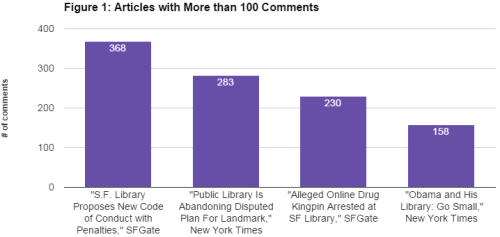
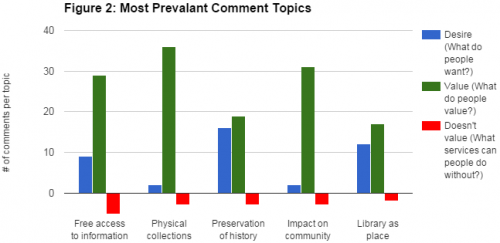
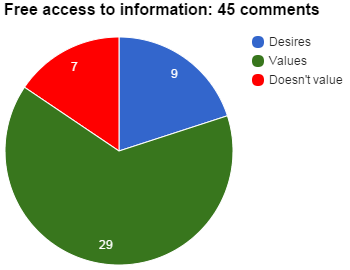
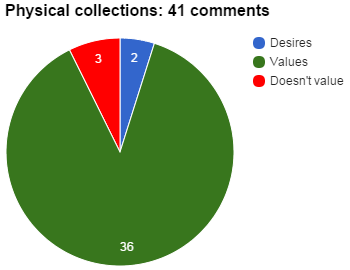
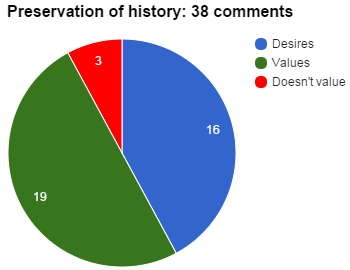
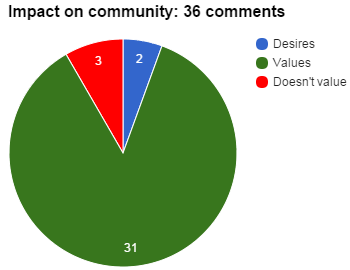
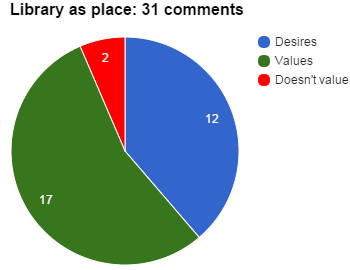
Pingback : Latest Library Links 18th December 2015 | Latest Library Links